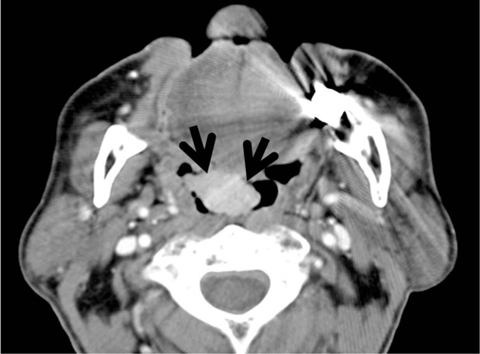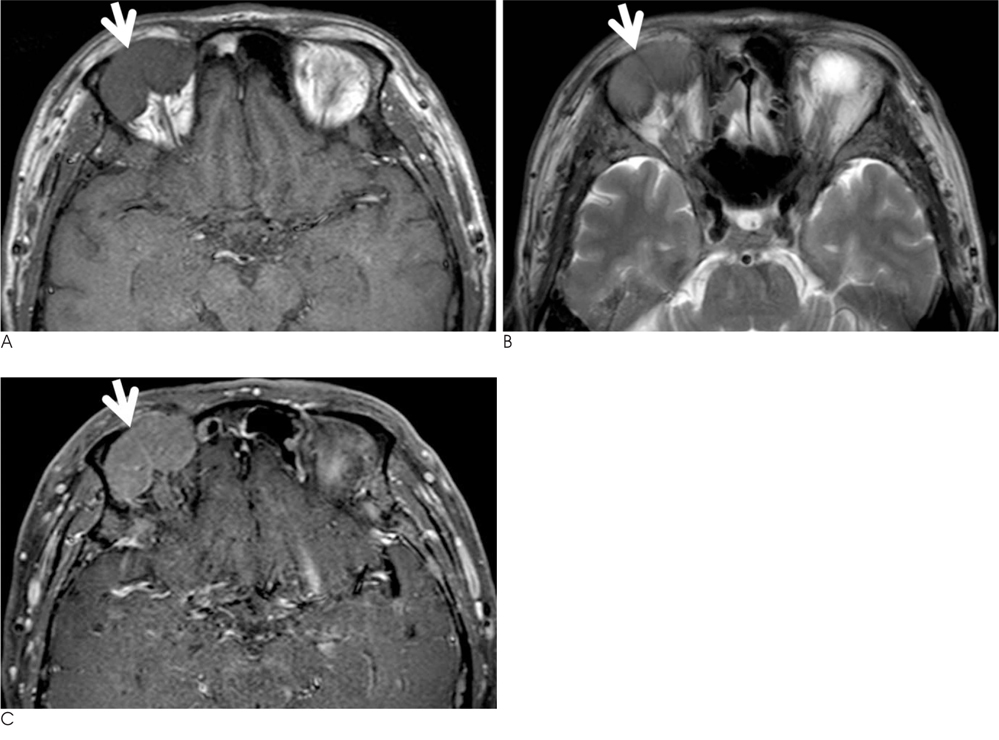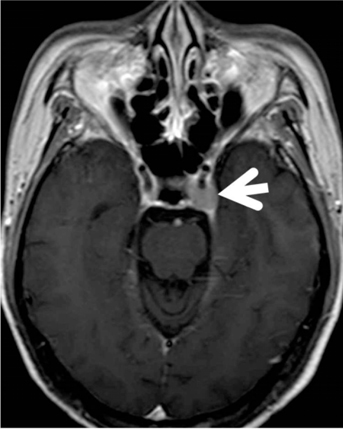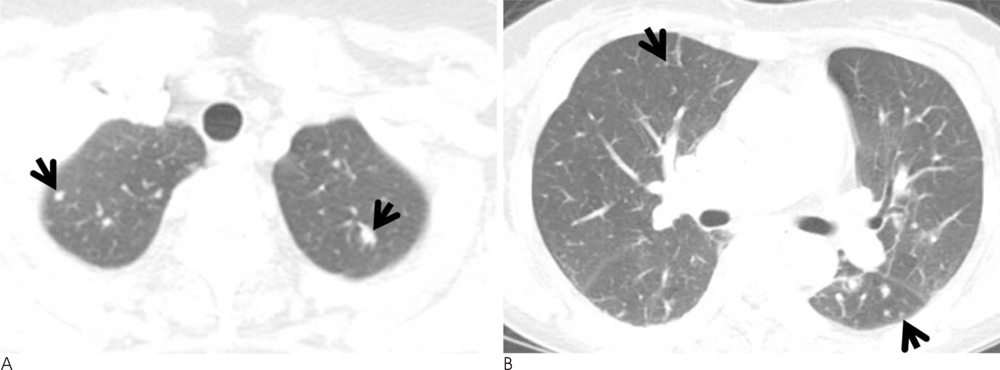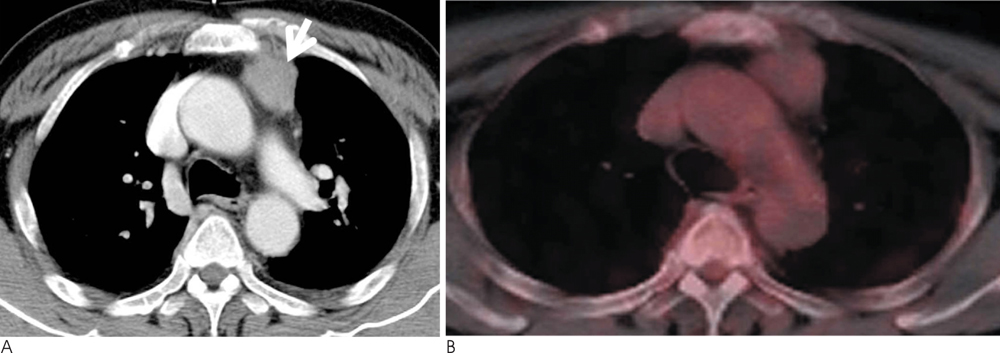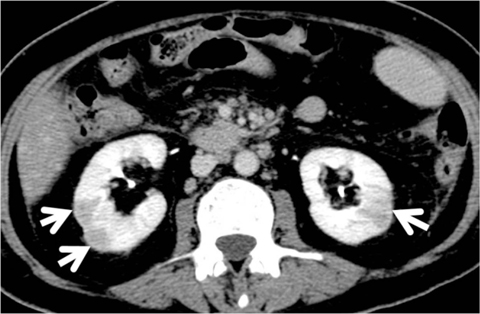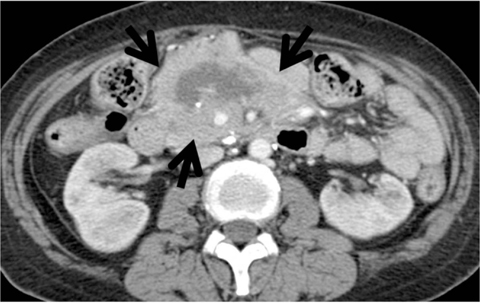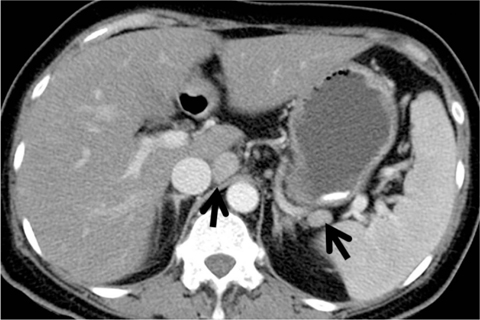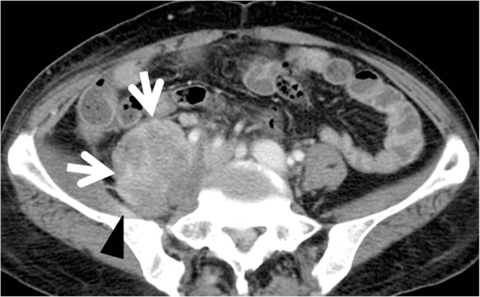J Korean Soc Radiol.
2011 Jun;64(6):567-575. 10.3348/jksr.2011.64.6.567.
A Pictorial Review on Extraosseous Manifestations of Multiple Myelomas
- Affiliations
-
- 1Department of Radiology and Center for Imaging Science, Samsung Medical Center, Sungkyunkwan University School of Medicine, Seoul, Korea. kyungs.lee@samsung.com
- KMID: 1443506
- DOI: http://doi.org/10.3348/jksr.2011.64.6.567
Abstract
- Extraosseous involvement of multiple myelomas can be seen clinically or radiologically in approximately 10-20% of patients at the time of initial diagnosis and may develop in an additional 15% of patients over the course of the disease. The condition can arise in any tissue of the body and its presence has been associated with more aggressive disease, a guarded prognosis, or high-dose chemotherapy. Imaging findings of extraosseous multiple myelomas are diverse. They usually show high enhancement on contrast-medium enhanced CT scans, exhibit iso-signal intensity on both T1- and T2-weighted images, and variable 18F-fluorine deoxyglucose (FDG) uptake at PET. The disease may simulate an infectious condition since it may be concurrent with underlying multiple myelomas per se or it may occur during myeloma treatment including stem cell transplantation.
MeSH Terms
Figure
Cited by 1 articles
-
Central Nervous System Involvement in a Patient with Multiple Myeloma Manifesting as an Intraventricular Mass with Leptomeningeal Spread
Jung Eun Lee, Eun Ja Lee, Hee Jin Huh, Jae-Woo Chung, Eun Kyoung Lee, Hyun Jung Lee
J Korean Soc Radiol. 2018;79(1):50-55. doi: 10.3348/jksr.2018.79.1.50.
Reference
-
1. Varettoni M, Corso A, Pica G, Mangiacavalli S, Pascutto C, Lazzarino M. Incidence, presenting features and outcome of extramedullary disease in multiple myeloma: a longitudinal study on 1003 consecutive patients. Ann Oncol. 2010; 21:325–330.2. Moulopoulos LA, Granfield CA, Dimopoulos MA, Kim EE, Alexanian R, Libshitz HI. Extraosseous multiple myeloma: imaging features. AJR Am J Roentgenol. 1993; 161:1083–1087.3. Patlas M, Hadas-Halpern I, Libson E. Imaging findings of extraosseous multiple myeloma. Cancer Imaging. 2002; 2:120–122.4. Hall MN, Jagannathan JP, Ramaiya NH, Shinagare AB, Van den Abbeele AD. Imaging of extraosseous myeloma: CT, PET/CT, and MRI features. AJR Am J Roentgenol. 2010; 195:1057–1065.5. Damaj G, Mohty M, Vey N, Dincan E, Bouabdallah R, Faucher C, et al. Features of extramedullary and extraosseous multiple myeloma: a report of 19 patients from a single center. Eur J Haematol. 2004; 73:402–406.6. Patriarca F, Zaja F, Silvestri F, Sperotto A, Scalise A, Gigli G, et al. Meningeal and cerebral involvement in multiple myeloma patients. Ann Hematol. 2001; 80:758–762.7. Masood A, Hudhud KH, Hegazi A, Syed G. Mediastinal plasmacytoma with multiple myeloma presenting as a diagnostic dilemma. Cases J. 2008; 1:116.8. Patlas M, Khalili K, Dill-Macky MJ, Wilson SR. Spectrum of imaging findings in abdominal extraosseous myeloma. AJR Am J Roentgenol. 2004; 183:929–932.9. Goh J, Otridge B, Brady H, Breatnach E, Dervan P, MacMathuna P. Aggressive multiple myeloma presenting as mesenteric panniculitis. Am J Gastroenterol. 2001; 96:238–241.10. Oshima K, Kanda Y, Nannya Y, Kaneko M, Hamaki T, Suguro M, et al. Clinical and pathologic findings in 52 consecutively autopsied cases with multiple myeloma. Am J Hematol. 2001; 67:1–5.
- Full Text Links
- Actions
-
Cited
- CITED
-
- Close
- Share
- Similar articles
-
- Systemic Manifestations of Immunoglobulin G4-Related Disease: A Pictorial Essay
- Extraosseous Tuberculosis of the Extremities
- A Case of Extradural Spinal Tuberculoma
- Extraosseous Ewing sarcoma of the pancreas: a case report
- Neurological Complications Following Liver Transplant: A Pictorial Review of Radiological and Clinical Findings

